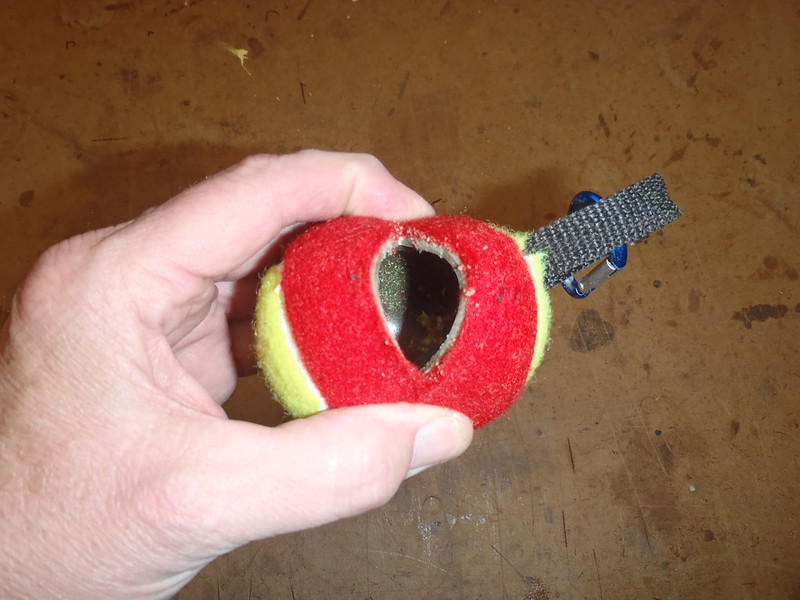Way easier than swinging that dang weight between my legs.
where do I begin
Way easier than swinging that dang weight between my legs.
Perhaps though, my system of line storage will be useful to rope slingers. The system consists of, a five-gallon bucket. Ta-dah! That (bucket) is something I usually do pack on canoe trips. Start with the tail end of the rope, and do attach it to something so it doesn't fly off with the rest of the rope upon deployment. Then just spool your line into the bucket. Spool isn't the right word--just get the line into the bucket. Then do whatever you need to with the free end--tie on your golf ball, water bottle, stick or what have you--and proceed with installation. The line will play out of the bucket in reverse of how you put it in: LIFO, in accounting terms (Last in, First out). It always amazes me how a rope on the ground becomes tangled in sticks, grass, pine cones, or whatever else is laying there. From the bucket, the line plays out well above the ground clutter. If, by some fluke, your first attempt isn't perfect, retrieve the line and just feed it hand-over-hand into the bucket, and you are ready to try again.
I climbed the trees and took them down from the top in 6' - 10' sections. At first, to get started with line installation I used a stout fishing rod with 40-lb line and an ounce weight. My shoulder is as old as the rest of me, so I sure wasn't going to throw anything 60' up. With the rod, it took many tries to get the line where I wanted it, but it worked. Then, my nice, light, basswood, canoeing pole broke, and became the backbone for a big sling shot of my own creation. The foot of the 8' long sling-shot rests on the ground. The throwing weight (Mike's bull's testacle) fits into a pocket fashioned from a piece of old dry bag. The sling is powered by pieces of stretchy exercise tubing. This thing will fire the throw weight clear over most trees, and can be accurately aimed. The challenge in using it is how much power to use for the shot--how far to pull back the sling. So, it is a relatively cool toy with which to play, but not so germane to this discussion, since it's not going into the canoe to go camping!
A quicker way to hang besides the two-tree method can be to use just one tree with a long rope, maybe 100'. The ground and a tall tree form two sides of a right-angled triangle and the pack is tied onto the rope forming the triangle's third side. The rope is pulled tight, raising the pack off the ground to the right height and location, then the rope is tied off onto a smaller tree.
Like a girl.
I need to add a ring to the tennis ball and try using that, but I’m kinda stumped. I could use a small eye bolt, with a washer and nut inside the ball, but left in place that would preclude playing catch or fetch. Although the ring might be handy on the tennis ball as a place to clip a tarp line.
Hmmm, I’m thinking a short webbing loop, knotted inside a hole drilled in the slit tennis ball, with a small carabineer attached to the webbing loop for the line to glide through.
 PC071394 by Mike McCrea, on Flickr
PC071394 by Mike McCrea, on Flickr PC071403 by Mike McCrea, on Flickr
PC071403 by Mike McCrea, on FlickrIf you need to get your tarp higher I suppose you could make a bipod out of a couple of long poles and use it to prop your ridgeline up, like the poles for an old style outfitter tent. I dont tarp much so I dont have a lot of issues that way. If I do tarp, I like to use a pole as a ridgeline, especially if I use that site often.
I'm liking my blue barrel days...and nights. I have hung it (30 L), but no longer do. Jangly ss carabiners are my early warning device of choice. I also tie the barrel to the tree.
Being of a physically compact nature I don't need the ridgeline terribly high, 6' will do nicely. That means an easy underhanded throw, just like, you know, and if need be I reach up with my paddle blade and coax the rope up higher, just to find that perfect branch.
